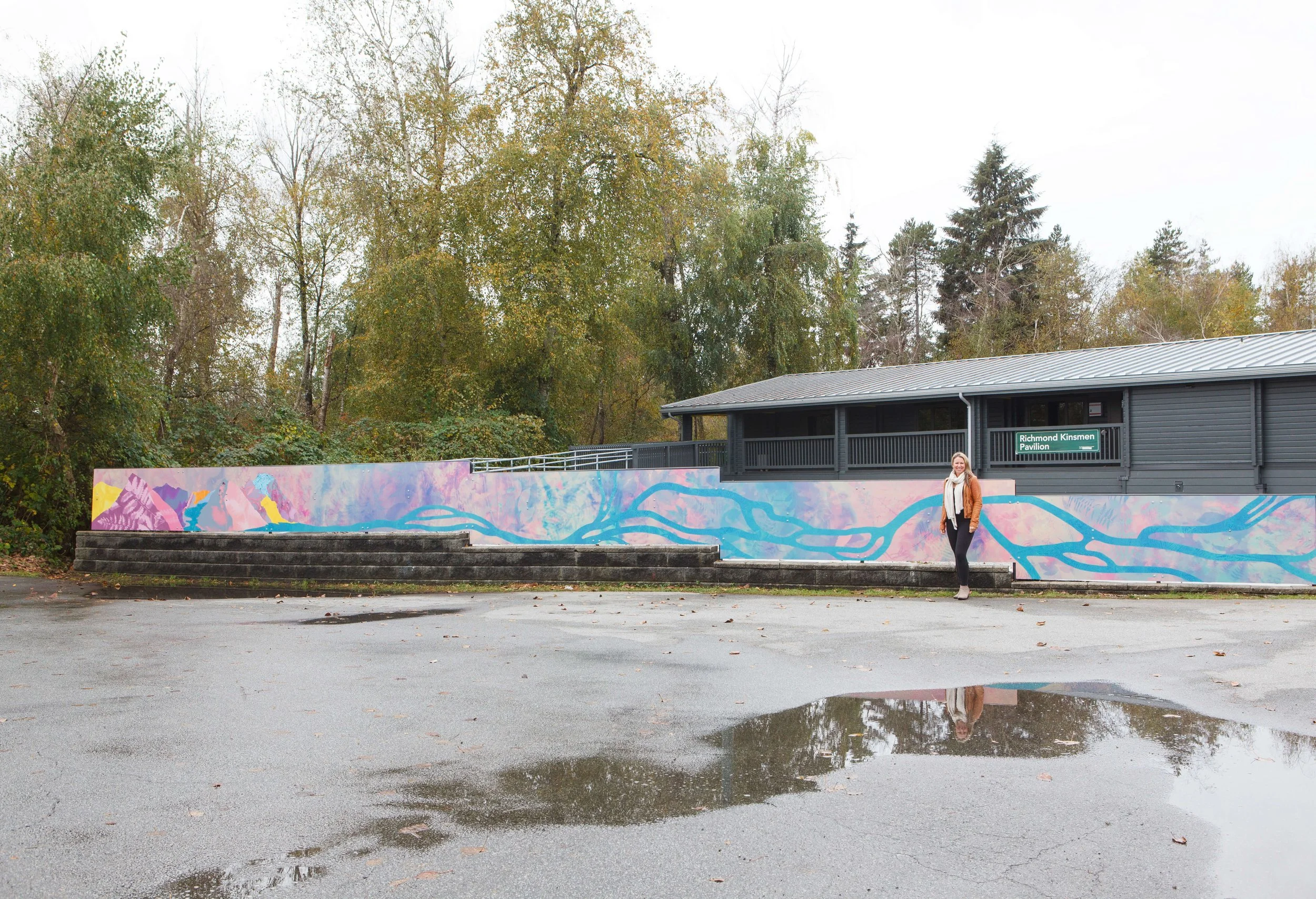I reserved the cyanotype printmaking workshop for my final session with the Richmond community, eager to share this quintessential aspect of my artistic practice. This form of alternative photography which has been a cornerstone in my work, was met with overwhelming enthusiasm resulting in a waitlist. Our diverse attendees ranged from children to seniors each drawn to the process's allure. We even welcomed returning participants; a testament to the workshop's appeal.
The session began with an exploration of the art history of cyanotypes, tracing back to Anna Atkins' pioneering contributions, which have significantly influenced my approach. Participants delved into my collection of pressed plants from the park, complemented by fresh clippings of invasive species, to find their perfect subjects. The picnic shelter thrummed with creative energy as participants arranged their compositions, later transferring them onto pre-treated cyanotype fabric.
Following the exposure setup, we embarked on a guided nature walk. Leading the group for the first time, I shared the geological narrative of this unique ecosystem, which I learned from the park staff during my residency. I also introduced elements of mycology and the symbiotic role of mycelium within forest ecosystems, captivating both young and old. These sessions awaken a sense of wonder, promoting a deep appreciation for nature’s intricacies and reinforcing the importance of environmental stewardship.
As we returned, serenaded by Erzsi Institorisz’s enchanting melodies, participants eagerly examined their exposures. Delighted by the immediate transformations, they immersed their prints in wash basins to halt the exposure process. The prints were then hung to dry, providing a backdrop to an afternoon of hot beverages, snacks, and soulful live music.
I commenced scanning the prints immediately, a meticulous process given the group’s size. The pre-established concept of the legacy public artwork allowed me to share a preview with participants as they waited. It was profoundly gratifying to see them resonate with the mural, understanding that their contributions form its foundation. This connection enhanced the experience, marking a perfect conclusion to the day.
Grateful for the invaluable assistance of Erzsi, Victoria, and Vivian, whose efforts ensured the smooth execution of the workshop, I reflect on the collaborative spirit that defined this journey. Their support, alongside the Richmond Nature Park's logistical aid and the backing from the City of Richmond and the Nature Park Society, has made this project possible.
Concluding these workshops has been bittersweet, as I have cherished my time with the Richmond community. I am confident this is not the end but the beginning of many future engagements. I look forward to continuing my artistic collaborations within Richmond's beautiful city parks and people.




















































































